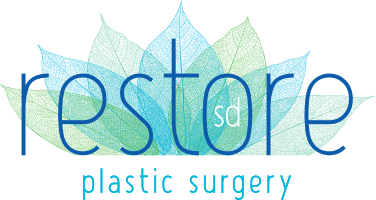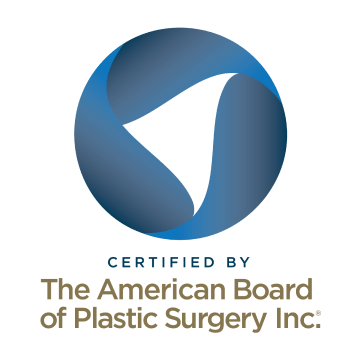In this episode of Carpools & Cannulas, Dr. Greer of Greer Plastic Surgery in Cleveland, OH, and Dr. Gallus of Restore SD Plastic Surgery in San Diego, CA discuss when you might need an internal bra. They talk about mesh for breast lift, breast reduction surgery and revision augmentation surgery. They discuss Galaflex, the most common mesh used, and things to ask your plastic surgeon about mesh and breast surgery.
Transcript
Dr. Gallus: Hi, everybody. It’s Dr. Kat Gallus and we’re about to kick off another episode of “Carpools & Cannulas.” I think this is episode 21, hard to say. And Dr. Greer is joining us in two seconds. And tonight we are going to be talking about, let’s see, there you are. Cool.
Dr. Greer: Are we really at episode 21? I lost count, really.
Dr. Gallus: Yeah. I had to figure it out. My sister’s logging on. My social media person who used to be my coordinator is like, “What episode is this?” She was bugging. And I’m like, “Oh, I don’t know. I gotta count it all out and figure…
Dr. Greer: Not a clue.
Dr. Gallus: Yeah. She keeps me on point.
Dr. Greer: That’s good. My social media person is really slacking probably because it’s me.
Dr. Gallus: You?
Dr. Greer: Yeah.
Dr. Gallus: Malia just keeps the posts going otherwise it’s so hard. It’s so hard.
Dr. Greer: It is hard. I write all mine once a week and keep them on a spreadsheet. And then my staff uploads them to Facebook business suite, which does Instagram and Facebook. And then I do all my TikToks myself. So…
Dr. Gallus: Yeah. You’re a beast, man. TheTikToks are…
Dr. Greer: Yeah. I do delegate. I send out the YouTube stuff for other people to upload. Thank God, because that’s just a lot.
Dr. Gallus: Well, and just to board everybody with technical challenges, getting these off my phone onto Dropbox, into YouTube…
Dr. Greer: Oh my God.
Dr. Gallus: I might have to get Wi-Fi.
Dr. Greer: Instagram doesn’t want you to download stuff either, so you have to buy an app so that you can download them. And then yeah, the upload to Dropbox takes forever so that we can share them with each other. And then the upload from Dropbox to YouTube ages.
Dr. Gallus: Yes. A hundred percent. Anyway, whatever, the things we do for our patients and in order to educate people, right?
Dr. Greer: That is what we’re here for and because we get to hang out every couple of weeks.
Dr. Gallus: Yeah, that’s right. And we get to talk. So I think…did you get the GalaFLEX? Did you bring some? You’re so good. Very nice. So yeah. So we were gonna talk about mesh and I feel like it’s become more and more… It’s actually a conversation a little bit more and more now. I know I’ve seen patients where they said, who I didn’t personally think that they needed mesh say that they were told by another surgeon that that’s what they needed or whatever. And I was like, “Yeah. It’s like some things, everybody, once you start using it, you might start using it for all the things.” But yes GalaFLEX, but there are definitely some indications, so we wanna explain to everybody what breast mesh is.
Dr. Greer: Yes. So this is GalaFLEX, this is my demo piece. We don’t implant this, but just so patients can see it.
Dr. Gallus: Yeah.
Dr. Greer: And it’s really flexible. It’s got these little tabs for sewing in and there’s also one that’s got a rim on it that looks shaped like… I don’t mess with that one. I just do this one. It comes in several different sizes, but you can trim it to fit and all the sizes cost the same. So I always just get the large one. And it comes in rectangles too. Which is nice for the abdomen, but it’s a resorb-able mesh, so it’s completely broken down by your body and your body lays down collagen over it. So it basically just makes your own healing more robust. I’ve also taken it out of people. Have you ever taken it out?
Dr. Gallus: No, but I’ve heard sometimes it’s still there.
Dr. Greer: Yeah. I took it out. Somebody had had, let me think pexy aug and then I was removing implants and she only had it on one side, so I took it out for symmetry and it was just this little rectangle of thicker tissue. It was very easy to remove, but it was clearly her own tissue. So it’s nice that way, because there’s not a foreign body down the road, like some of the hernia meshes or the TBT meshes, if you’ve ever heard of those causing problems, it’s not the same stuff. It’s totally replaced by your own tissue.
Dr. Gallus: Right. But however, it’s a scaffolding, which is usually what all these meshes accomplish. But it’s interesting because there’s, you’re right. I still remember using Gore-Tex sheets for giant abdominal wall hernias in my general surgery and sometimes plastic surgery days which is completely foreign. It’s never gonna incorporate. You’re basically just putting it in there to bridge something. That has its own issues. Usually, as a plastic surgery resident, we were championed with getting it out.
Dr. Greer: Yes. I remember picking out mesh in clinic just because people would have huge sheets and would get exposed so would get infected and it wouldn’t heal, but you can’t just tear apart their whole abdominal wall.
Dr. Gallus: Right. Okay. So that was one iteration. Then everyone was super excited about your own collagen replacing the mesh as Candace is pointing out, I think… Was Alloderm, right?
Dr. Greer: Yes. We were all super excited about that and it was great in some ways. It definitely thickens the tissue. It doesn’t always incorporate, we’ve all had to take it out when it’s just floating around in there, and it’s thick too. Alloderm is just a sheet of Cuban collagen, it’s human skin that’s had all the cellular components removed so there’s nothing there for your immune system to react to and your body grows into it but it’s thicker than GalaFLEX. So that takes a little bit longer, it doesn’t always get incorporated and it’s really stretchy.
Dr. Gallus: Yes, it is very stretchy and it definitely is prone to infection and these are… So people weren’t using it for cosmetic case indication, so in breast reconstruction it was mostly where it was used.
Dr. Greer: Yeah.
Dr. Gallus: So, there’s a lot of other circumstances in there that makes it a higher-risk operation in general, anyway, but when they thought about using it for cosmetic cases, the price of using human-derived tissue is extremely high.
Dr. Greer: Very high.
Dr. Gallus: So it made it less popular. You need to use a drain also, not fun if you don’t have to and…
Dr. Greer: And it’s not great for things like abdominal wall because it stretches.
Dr. Gallus: Yes, and then the stretchy part. So GalaFLEX came along and is a great product because it doesn’t stretch and where you put it is where it ends, so you know exactly what you’re getting and gets incorporated by your body. It dissolves, it’s essentially made of suture. That’s gonna appear…
Dr. Greer: Right. And I feel like we don’t see that same risk of seromas, which are fluid collection.
Dr. Gallus: No.
Dr. Greer: That’s something we would see all the time. Now, granted again, breast reconstruction, there’s this huge dead space because they’ve taken out all the breast tissue, goes all the way up into the axilla where your lymph nodes are, that right there’s a setup for seromas anyway, but I think there have been some studies showing that Alloderm maybe produces a little bit more reactive fluid and GalaFLEX does not seem to do that, at least in my experience.
Dr. Gallus: No, I’ve not had that experience. Also, yeah, the lack of drains is helpful. The cost is less, you don’t wanna put it in willy-nilly because there is a cost associated with it, of course. So…
Dr. Greer: Oh, with Ehlers-Danlos I think we can confidently say nobody has any idea probably.
Dr. Gallus: Yeah I don’t know. We’re always a little reticent to operate on those patients and it depends on what form of ED they have too because there’s different subtypes. So yeah.
Dr. Greer: And to know how it’s getting replaced, we would have to put the mesh in and then have taken it out of somebody. So just the likelihood that there’s a surgeon out there in the world who has, A, operated on somebody with Ehlers-Danlos, B, used GalaFLEX and then C, gone back and taken it out is pretty low. But if you’re out there message us because we wanna hear…
Dr. Gallus: Yeah. Please let us know. We wanna know. So yeah, so it has made its way into the cosmetic revision business. I don’t do breast reconstruction anymore, but it’s also being used in breast recon as well because of the same alternatives that we talked about. It could potentially in some places be maybe preferred. So that being said, most of the cases I’ve used it in have been with regards to an implant. So revision, breast augmentation, mastopexy. So the implant pocket is no longer exactly where you want it. So you want to reset where that implant’s gonna sit on the chest wall and putting this in and suturing it in place has been a game-changer versus other options, right?
Dr. Greer: Like a perfect little hammock. It works great. I actually do use it in primary pexys and reductions as well.
Dr. Gallus: Okay.
Dr. Greer: So not just revision.
Dr. Gallus: For everybody or just patients that…
Dr. Greer: No.
Dr. Gallus: Okay. So what’s the type of patient that you would think, “This person needs a breast lift or a breast reduction. I think they would benefit from some reinforcement”? How do you decide that?
Dr. Greer: Those are the patients who come to me and they say, “I want them smaller or higher. I want upper pull fullness, but I don’t really wanna change the size and I don’t want an implant.”
Dr. Gallus: Okay.
Dr. Greer: So then we talk. Sometimes I’ll do fat grafting. If they just want a more youthful shape because there’s the pancake shape. It’s not like the perfect 25-year-old that you see in the movies, which most people don’t have breasts that shape. But if you wanna get closer to that look, the GalaFLEX just gives a lot more support. And it will get more of that tissue into the upper pull without resorting to fat grafting or implants if they don’t want something down the road or if they don’t have any fat to graft.
Dr. Gallus: Okay.
Dr. Greer: It’s nice for that.
Dr. Gallus: So, I would also think that patients who’ve had a lot of weight loss, so their skin’s been stretched out or the young patient that maybe grew really fast. So you look at them and you see stretch marks already on their breast or their breasts got really large and then small again with pregnancy or what have you. People where you’re a little bit worried about the skin quality that that might be offering some extra support. Do you do a different pedicle then if you’re putting it in?
Dr. Greer: I actually don’t and the other people it’s really good on is… So, if somebody’s got stretched skin, but they’re glandular tissue is really dense, because say they’re 30 and they’ve lost a lot of weight, you can rearrange that gland and it will hold the skin. But for those women in their 50s and 60s where their breast is more adipose tissue than glandular, you can’t really suture that well, those are perfect people for GalaFLEX.
Dr. Gallus: Okay.
Dr. Greer: And what I do, I still do a superior medial pedicle for all of my reductions and pexys. And then I just elevate a skin flap right at that superficial breast fascia layer. Just probably the lower four centimeters between the nipple and inframammary fold, go laterally until you hit good rib contact on each side, and then one little stitch to the periosteum on each side to just lift it up. And I literally lift the breast up a little as I stitch it and then a couple above and below to tack it flat, re-drape the skin flaps and it really gives nice lift.
Dr. Gallus: Nice. Very nice. Okay, cool.
Dr. Greer: Yeah.
Dr. Gallus: I definitely used it when, like I said, the implant is trying to make its way either down your chest wall or…
Dr. Greer: Oh, yeah. Or out to the side.
Dr. Gallus: Out in your armpit, around to your back. And so old school techniques were taking the capsule that already formed or just suturing putting internal sutures, which often fail over time. Like for whatever reason, it didn’t hold up the first time and now it’s not gonna hold up again. So those cases have been really successful. I have used the 3D mesh with the rim.
Dr. Greer: Yeah. How is that?
Dr. Gallus: It’s okay. It’s definitely easy to sew in because it holds its framework but in thin people, you can feel that rim for quite some time. So…
Dr. Greer: Well, and you can feel the mesh, I warn patients. You can feel something wrinkling under the skin for a couple of months.
Dr. Gallus: Yeah.
Dr. Greer: Until it incorporates.
Dr. Gallus: Right.
Dr. Greer: Now, have you ever used it on abdominoplasty?
Dr. Gallus: I have not. I have not used it in those patients.
Dr. Greer: I’ve done a few.
Dr. Gallus: You have? I feel like if they have terrible fascia you might wanna lend some strength to that.
Dr. Greer: That’s when I use it
Dr. Gallus: Okay, because then we’re suturing it to pubic synthesis. Where on the body are you putting that or is it just really…
Dr. Greer: I actually just do it as an overlay. Just because I figure it’s gonna create a little more collagen and stick a little bit better. So I’ve done it if somebody’s got a really wide diastasis in the upper abdomen or I have reason to worry that their fascia quality isn’t great because massive weight loss patients often their fascia is just so thin. So you can overlay that just to reinforce the repair. And then I had another patient who I swore had a hernia on the left lower quadrant, got a CT, no hernia. It was just super weak. So I overlayed GalaFLEX there too. And it’s really cost-effective. You can get a big rectangle for the same size as two sheets for the breast. So…
Dr. Gallus: Right. And I believe at the women’s conference somebody talked about taking that rectangle and cutting it into two pieces and then putting it as a diamond shape at the bottom of that inframammary crease just as a little diamond hold depending on the patient. So then you could get one piece and use it on two patients. So just reinforce the inframammary crease.
Dr. Greer: Yes.
Dr. Gallus: So for everybody that IMF fold is where your breast stops. It’s where your breast attaches to the chest wall and it doesn’t slide down your abdomen.
Dr. Greer: Although it can if it gets proliferated during breast augmentation and that’s when you get that double bubble, it’s bad.
Dr. Gallus: Yeah. So it’s a zone of adhesion that isn’t an actual, it’s very easy to blow through and can create problems if somebody undermines that and sometimes needs some reinforcement. And so, if that’s the one area where you’re worried about a recurrence of that area coming back down, the two little diamonds essentially help reinforce that. Most of my cases, not only is it falling down their chest, but it’s moving out to their lateral chest wall. And so you really need that whole hammock effect. And I think that helps a lot and like I said, there’s little stretch to it, so it’s gonna go where it’s gonna go.
Dr. Greer: Yeah.
Dr. Gallus: There are a couple other products out there since this is not a spawn con sponsored by GalaFLEX.
Dr. Greer: Yeah. Hey Rob, my GalaFLEX rep, where are you, man? You were supposed to get us Starbucks for this. He, in no way, promised that by the way.
Dr. Gallus: So, there’s DuraSorb, which I don’t have a ton of experience with. I know Ashley Gordon in Austin has been using it, but it’s newer to the market. So just like everything else, the first to market usually has the advantage of getting the word out there, people working with the indications and having more experience with it. And then I also have recently used telebio, it’s a ovine, so sheep-derived product that also has mesh integration.
Dr. Greer: Wait, sheep is ovine as opposed to bovine?
Dr. Gallus: Yeah. Bovine.
Dr. Greer: Where did you learn that?
Dr. Gallus: I don’t know. I feel like I know that from my wound…
Dr. Greer: I don’t know that.
Dr. Gallus: Oh yeah. Well, you’re welcome. So let’s see. Yeah, so I’ve recently used that as a product. So again, because it’s newer, I don’t have the longitudinal… So, I’ve been using GalaFLEX for at least four or five… No longer than that, because I was still in the Navy and we were using it, so five or six years. What about you, in…
Dr. Greer: I think probably two to three.
Dr. Gallus: Yeah. And again, if you start by just using it for revision cases, depending on how many revision cases you do, you may or may not be using it a lot. I do a fair amount of revision cases and sometimes people will… Just the other nice thing about it is since it integrates really well when these older ladies have these crazy ruptured implants and all kinds of stuff going on, and I’m just trying to reestablish a pocket after I’ve cleared out the debris. It’s very helpful and I know it’s not gonna create a foreign body problem for me. Like i.e., infection, which would be unhelpful.
Dr. Greer: Yeah.
Dr. Gallus: Also I think; I don’t know if there’s been studies out what its effect is on recurrent capsular contracture. I’m sure that’s the direction they would probably go in if they could.
Dr. Greer: Yeah. Although you’ve gotta wonder because it’s not… Like in breast recon cases, if we’re worried about cap con you coat the whole implant.
Dr. Gallus: Right.
Dr. Greer: And that’s not really what you do with GalaFLEX, although if it worked, they could make like a little GalaFLEX sock that you could just slide it in place first you get close. That’d work really well.
Dr. Gallus: Right. Yeah. So that’s interesting. So all of this is trying to find a balance between the capsule that forms around the implant and making it work for you and either reinforcing the capsule or putting the capsule where you want it. But anytime you put an implant in, a capsule forms and it can either work in your favor or not work in your favor, and this is another tool in the toolbox in terms of breast implant revision surgery, to get the pocket where you want it. And that’s… I don’t know that anyone’s using it. Well, no, I take that back. I was gonna say, no one’s using it for primary breast aug, but there is one category I do think that they use it.
Dr. Greer: I could see if you’re doing super huge implants, which, those are gonna cause problems, but I could make the argument.
Dr. Gallus: Yeah. So I do believe that there are surgeons who are doing super large implants, 800 CCs, the over-expanded, saline 1000 CCs. So if you want like a two litter bottle of Coke in your chest you could argue maybe adding something to support that internally might get you a little farther down before the whole thing starts causing problems.
Dr. Greer: Yeah. Because you just can’t, especially just depending what size you’re starting from. You can’t fit that size implant without blowing out the inframammary crease. It just doesn’t, or the whole thing’s sitting way, way too high.
Dr. Gallus: Yeah. And the stretch on all of that is non-anatomic on some…
Dr. Greer: Yeah. On some people. I’ve put in 800 CC implants that look totally fine. It just really depends on individually.
Dr. Gallus: But at least in San Diego, the people getting those implants tend to be a hundred pounds and B breasts. In which case, there’s no way.
Dr. Greer: Yeah. It just doesn’t fit.
Dr. Gallus: It’s not gonna work. If that’s your aesthetic, I don’t do those cases.
Dr. Greer: Sometimes I’m glad to be in the Midwest. It’s a more conservative goal.
Dr. Gallus: Yeah. I saw a picture of Kourtney Kardashian on Instagram this morning. My daughter was actually pointing it out and suggested that her abdomen looked like an old lady’s, but the rest of…
Dr. Greer: Oh my gosh, is that the one where her skin is just adherent to her abdominal wall and her belly button sticks out because there’s no fat? That was not good.
Dr. Gallus: So I’m like, “What? What are you talking about?” And then I looked, and it’s just funny that from a 14-year-old standpoint, it looks like an old lady abdomen. I’m like, “Okay. Be careful with your words.”
Dr. Greer: Yeah. Old lady abdomen. It’s not.
Dr. Gallus: But from a professional standpoint, it just looks like skin on abdomen.
Dr. Greer: Yeah.
Dr. Gallus: It’s a little alarming. So, it’s a different aesthetic sometimes in Southern California, not necessarily a better one.
Dr. Greer: Yeah. I like Cleveland for that reason.
Dr. Gallus: Yeah. Well, I know. I would say that the weather’s better, but today it’s been bonkers. So…
Dr. Greer: It was beautiful today. I can see my azaleas blooming out the window because my new house had like huge azalea bushes. It’s amazing.
Dr. Gallus: That’s good. That’s…
Dr. Greer: Sometimes we beat you out.
Dr. Gallus: Yes, that’s true. And it is a little disappointing when people come to visit and then it’s a couple of days where it’s cold or overcast and I’m like… Overwhelmingly, the days are better, but it’s not perfect every day. So…
Dr. Greer: Yeah. Hey, when are we gonna have WPS in Cleveland? Nobody’s really fighting, no conference, I found.
Dr. Gallus: It is gonna be in Charlotte, though, or Charleston.
Dr. Greer: Hopefully I won’t get offline canceled again this year.
Dr. Gallus: I know. I hope not. February’s tough. So, all right. Well, okay. So just to recap. I know we couldn’t see the eclipse last night either. It was cloudy, the marine layer moved in.
Dr. Greer: Yeah.
Dr. Gallus: So where I live, it’s always a constant battle between the water temperature and land temperature. And when they collide where I am, it just makes everything, it’s called the marine layer and you can watch it move in sometimes. So it’s this rolling cloud and it’s cold and dense fog at the beach. But if you go in a mile and a half, it’s burning hot. So that’s the breaks. I’ll still take the water though.
Dr. Greer: That’s what you get.
Dr. Gallus: All right. So tell me, okay, top indication for using mesh with breast surgery, would you say is your most common use of it?
Dr. Greer: It’s actually gonna be primary pexy or lift.
Dr. Gallus: Okay.
Dr. Greer: I like it enough. I was asking around to figure out who could use it so I could fly and see them.
Dr. Gallus: Oh, right. No, I’ve done that too. I actually was going use it for a breast reduction on a friend of mine who practices in Huntington Beach and then COVID hit and then it’s fast forward three years and I’ve not gotten it together. But yeah, I think that’s interesting. And I would love to see some video of different ways of people, because people talk about it, and present about it, but they don’t necessarily show us inter-operative videos. So you would say your most common is lift?
Dr. Greer: I should take one next time I use it for a lift.
Dr. Gallus: Yeah, absolutely. I’d love to see that. And then I would say my most common indication’s revision, breast augmentation. Yeah. So it’s a no-brainer for that. So yeah. So if you’re considering either of those operations, be sure to ask your surgeon about mesh. And then I think, what are we gonna talk about in a couple weeks? What should we tell?
Dr. Greer: That’s a good question. What do you guys wanna hear about? Leave them in the comments, we’re watching. Let’s see. We hit labioplasty last time. We’ve definitely talked about aug; I know we talked about brow lift recently.
Dr. Gallus: Yeah. And thighs.
Dr. Greer: Oh yeah. Thighs were good.
Dr. Gallus: Yeah, I do agree. A video of GalaFLEX being placed would be helpful and informative to all. So maybe next time. Tomorrow I’m doing a panniculectomy. I’m not sure we can devote an entire half hour to that.
Dr. Greer: No, although we could, and this might be a useful talk. Just talk about the differences between straight up panniculectomy under insurance for issues versus cosmetic abdominoplasty because they are really different.
Dr. Gallus: Yes. I think that would be… Yeah, that would be helpful. Let’s go there, yeah. And then maybe talk about liposuction as an adjunct to tummy tucks.
Dr. Greer: Oh yeah. Because that’s good, and my practice has totally changed on that in the last three years.
Dr. Gallus: Great.
Dr. Greer: Yeah. Okay. That’ll be a good one, Kat.
Dr. Gallus: Yay. All right. Well, yeah. I’ll see you in a couple of weeks. I have the California Society Meeting is coming up.
Dr. Greer: Perfect.
Dr. Gallus: This weekend, so maybe I’ll learn some new things and bring some new topics to the table as well.
Dr. Greer: Nice. I will see you in two weeks. I’ll put it in my calendar.
Dr. Gallus: All right. Have a good night.
Dr. Greer: You too. Bye, everyone. Thanks for watching.
Dr. Gallus: Bye everybody.
About Restore SD & Dr. Katerina Gallus
As the Director of Restore SD Plastic Surgery, board certified female plastic surgeon Dr. Katerina Gallus has over 15 years of experience helping San Diego women enjoy head to toe rejuvenation with face, breast and body procedures. After a successful career as a Navy plastic surgeon, Dr. Gallus founded Restore SD Plastic Surgery with the intention of creating a welcoming space for anyone seeking cosmetic enhancement.
Restore SD Plastic Surgery offers popular facial rejuvenation procedures like facelift & neck lift, facial fat grafting, and eyelid lift; breast augmentation with implants, breast lifts or breast reduction; body contouring procedures such as tummy tuck, liposuction, mommy makeover, and Brazilian butt lift (BBL), as well as aesthetician services, BOTOX, injectable fillers, and laser treatments.
Dr. Gallus and her highly-experienced aesthetics team are here to help you look and feel your best! To schedule a personal consultation, please contact us online or call our San Diego office at (858) 224-2281 today.









